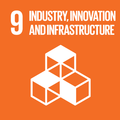Cement manufactured by Solidia requires less energy and water to produce than conventional cement, and sequesters CO2 from industry in the process.
Solidia’s innovation can sequester CO2 emissions from industrial processes into construction and building materials. Solidia uses a chemical reaction during their cement production that requires less limestone and lower temperatures than conventional methods, resulting in reduced CO2 emissions. To make concrete, the cement and sand mix is hardened and cured utilising mainly waste CO2 instead of water. According to Solidia, the technology can reduce CO2 emissions by up to 70% and eliminate water usage compared with conventional production. Solidia’s concrete is ready in about 24 hours, compared to 28 days with conventional methods. The durability and strength of Solidia’s concrete was independently verified by CTLGroup.
Solidia has partnered with LafargeHolcim, a building materials company operating in 61 countries, through which their technology will be commercialized. Their first products to be introduced to the market are paving stones, roof tiles and concrete blocks.
To drive innovation to market, you need the right people, a compelling vision, collaborators who give you market insight and credibility, and not quite enough time.
Tom Schuler – CEO, Solidia Technologies
Why you should care
The production of cement, which is used to make concrete, is responsible for up to 5% of total global carbon emissions. By curing the cement using waste CO2 rather than water, Solidia effectively reduces the carbon and water footprint of concrete.
How the Global Goals are addressed

Industry, innovation and infrastructure
Solidia Technologies offers concrete and cement products with a substantially lower environmental footprint, which can help to decouple environmental impact with economic growth.

Sustainable cities and communities
Solidia’s system reduces the carbon footprint of concrete by up to 70%. This can help to drive more sustainable urbanisation in growing cities, particularly in developing countries.

Responsible consumption and production
Reducing the input energy required and making use of waste CO2 from industrial production processes increases sustainability in the production of cement.

Climate action
The company estimates that if adopted globally, their technologies could reduce global CO2 levels by around 4%.


